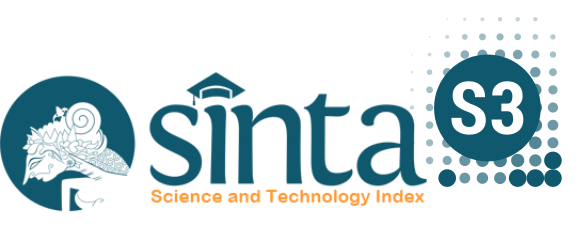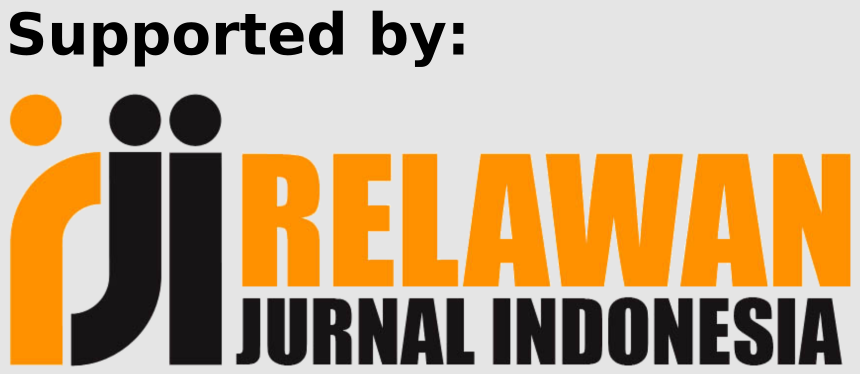Instrument for measuring maternal attitudes, knowledge and self-confidence towards breastfeeding: Literature review
DOI:
https://doi.org/10.31101/jhtam.3915Abstract views 339 times
Keywords:
instruments, Breastfeeding, knowledge, Attitude, confidenceAbstract
Downloads
References
Abdulahi, Fretheim, & Argaw. (2021). Initiation and Exclusive Breastfeeding Practices and Infant Ethiopian Setting. Nutrients.
Abdulahi, M., Fretheim, A., Argaw, A., & Magnus, J. H. (2021). Determinants of knowledge and attitude towards breastfeeding in rural pregnant women using validated instruments in ethiopia. International Journal of Environmental Research and Public Health, 18(15). https://doi.org/10.3390/ijerph18157930
Alkusayer, N. M., Midodzi, W. K., Newhook, L. A., Burrage, L., Gill, N., Halfyard, B., & Twells, L. K. (2018). Psychometric assessment and precision remodeling of the iowa infant feeding attitude scale to improve clinical use and efficacy among prenatal women in canada. Journal of Human Lactation, 34(1), 20–29. https://doi.org/10.1177/0890334417741296
Asgarian, A., Hashemi, M., Pournikoo, M., Mirazimi, T. S., Zamanian, H., & Amini-Tehrani, M. (2020). Translation, Validation, and Psychometric Properties of Breastfeeding Self-Efficacy Scale—Short Form Among Iranian Women. Journal of Human Lactation, 36(2), 227–235. https://doi.org/10.1177/0890334419883572
Bień. (2021). The attitudes of polish women towards breastfeeding based on the iowa infant feeding attitude scale (Iifas). Nutrients, 13(12). doi: 10.3390/nu13124338.
Bruggemann, O. M., Parpinelli, M. A., Osis, M. J. D., Cecatti, J. G., & Neto, A. S. C. (2007). Support to woman by a companion of her choice during childbirth: A randomized controlled trial. Reproductive Health, 4, 1–7. https://doi.org/10.1186/1742-4755-4-5
Cotelo. (2018). Infant feeding attitudes and practices of spanish low-risk expectantwomen using the IIFAS (Iowa infant feeding attitude scale)’,. Nutrients, 10(4), 1–15. doi: 10.3390/nu10040520
Da Conceição, C. M., Coca, K. P., Dos Remédios Da Silva Alves, M., & De Amorim Almeida, F. (2017). Validation of the LATCH breastfeeding assessment instrument for the Portuguese language. ACTA Paulista de Enfermagem, 30(2), 210–216. https://doi.org/10.1590/1982-0194201700032
Dolgun, G., İnal, S., Erdim, L., & Korkut, S. (2018). Reliability and validity of the Bristol Breastfeeding Assessment Tool in the Turkish population. Midwifery, 57, 47–53. https://doi.org/10.1016/j.midw.2017.10.007
Gerhardsson, E., Nyqvist, K. H., Mattsson, E., Volgsten, H., Hildingsson, I., & Funkquist, E. L. (2014). The swedish version of the breastfeeding self-efficacy scale-short form: Reliability and validity assessment. Journal of Human Lactation, 30(3), 340–345. https://doi.org/10.1177/0890334414523836
Govoni, L., Ricchi, A., Molinazzi, M. T., Galli, M. C., Putignano, A., Artioli, G., Foà, C., Palmieri, E., & Neri, I. (2019). Breastfeeding pathologies: Analysis of prevalence, risk and protective factors. Acta Biomedica, 90, 56–62. https://doi.org/10.23750/abm.v90i4-S.8240
Grover-Baltazar, G. A., Macedo-Ojeda, G., Sandoval-Rodríguez, A., Martínez-Vizmanos, M., Carrera-Quintanar, L., & Vizmanos, B. (2021). Validation of the spanish-mexican version of the australian breastfeeding attitude questionnaire in higher education health students. International Journal of Environmental Research and Public Health, 18(9). https://doi.org/10.3390/ijerph18094609
Ingram, J., Johnson, D., Copeland, M., Churchill, C., & Taylor, H. (2015). The development of a new breast feeding assessment tool and the relationship with breast feeding self-efficacy. Midwifery, 31(1), 132–137. https://doi.org/10.1016/j.midw.2014.07.001
Ip, W. Y., Gao, L. L., Choi, K. C., Chau, J. P. C., & Xiao, Y. (2016). The Short Form of the Breastfeeding Self-Efficacy Scale as a Prognostic Factor of Exclusive Breastfeeding among Mandarin-Speaking Chinese Mothers. Journal of Human Lactation, 32(4), 711–720. https://doi.org/10.1177/0890334416658014
Janmohamed, A., Sohani, N., Lassi, Z. S., & Bhutta, Z. A. (2020). The effects of community home visit and peer group nutrition intervention delivery platforms on nutrition outcomes in low and middle-income countries: A systematic review and meta-analysis. Nutrients, 12(2). https://doi.org/10.3390/nu12020440
Pados, B. F., Thoyre, S. M., Estrem, H. H., Park, J., & McComish, C. (2018). Factor Structure and Psychometric Properties of the Neonatal Eating Assessment Tool–Breastfeeding. JOGNN - Journal of Obstetric, Gynecologic, and Neonatal Nursing, 47(3), 396–414. https://doi.org/10.1016/j.jogn.2018.02.014
Pados, Park, & Thoyre. (2020). ‘Neonatal Eating Assessment Tool—Breastfeeding: Reference Values for Infants Less Than 7 Months old’,. Journal of Human Lactation, 36(2), 236–244. doi: 10.1177/0890334419869598.
Petrozzi, A., & Gagliardi, L. (2016). Breastfeeding self-efficacy scale: Validation of the Italian version and correlation with breast-feeding at 3 months. Journal of Pediatric Gastroenterology and Nutrition, 62(1), 137–139. https://doi.org/10.1097/MPG.0000000000000902
Twells, L. K., Midodzi, W. K., Ludlow, V., Murphy-Goodridge, J., Burrage, L., Gill, N., Halfyard, B., Schiff, R., & Newhook, L. A. (2016). Assessing Infant Feeding Attitudes of Expectant Women in a Provincial Population in Canada: Validation of the Iowa Infant Feeding Attitude Scale. Journal of Human Lactation, 32(3), NP9–NP18. https://doi.org/10.1177/0890334414559647
Victora, Bahl, Barros, França, Horton, Krasevec, Murch, Sankar, Walker, Allen, Dharmage, Lodge, Bhandar, & Chowdhury. (2016). Breastfeeding in the 21st century: Epidemiology, mechanisms, and lifelong effect. The Lancet, 387(10017), 475–490. https://doi.org/10.1016/S0140-6736(15)01024-7
World Health Organization. (2023). World Breastfeeding Week 1-7 Agustus 2023.
Yang. (2018). Validation of the Chinese Version of the Australian Breastfeeding Attitude Questionnaire. Journal of Human Lactation, 34(4), 674–681.
Yang, S. F., Schmied, V., Burns, E., Brodribb, W., & Salamonson, Y. (2018). Validation of the Chinese Version of the Australian Breastfeeding Attitude Questionnaire. Journal of Human Lactation, 34(4), 674–681. https://doi.org/10.1177/0890334418761567
Downloads
Published
How to Cite
Issue
Section
License
Copyright (c) 2024 Hanifatur Rosyidah, Wardatun Nafisah, Endang Surani, Hadijah Nakatudde

This work is licensed under a Creative Commons Attribution-ShareAlike 4.0 International License.
Authors who publish with Journal of Health Technology Assessment in Midwifery agree to the following terms:
- Authors retain copyright and grant the journal right of first publication with the work simultaneously licensed under a Creative Commons Attribution License (CC BY-SA 4.0) that allows others to share the work with an acknowledgment of the work's authorship and initial publication in this journal.
- Authors are able to enter into separate, additional contractual arrangements for the non-exclusive distribution of the journal's published version of the work (e.g., post it to an institutional repository or publish it in a book), with an acknowledgment of its initial publication in this journal.
- Authors are permitted and encouraged to post their work online (e.g., in institutional repositories or on their website) prior to and during the submission process, as it can lead to productive exchanges, as well as earlier and greater citation of published work.

Journal of Health Technology Assessment in Midwifery is licensed under a Creative Commons Attribution-ShareAlike 4.0 International License..

















